Underfloor ventilation in a private house: solution options and practical implementation methods
The durability of a private house from any building material largely depends on the regular ventilation of the space located under the lower floor. The ideal option is when the ventilation of the underfloor in a private house is designed and implemented during the initial stage of construction. Then it is designed and arranged correctly.
You will learn all about the competent organization of a system designed to remove excess moisture from structures partially or completely buried in the ground from the next article.
We will cover important functions performed by ventilation. We will show you how to properly position and install components designed to remove exhaust and supply fresh air.
The content of the article:
The need for underground ventilation
The organization of underground ventilation in a private building is mandatory for the following reasons:
- From the temperature difference in the street and under the floor, the condensate settles on the logs with floor beams and on the base. Without the organization of ventilation, drops of water with an acid content destroy concrete, brick, wood, causing corrosion of building materials.
- Humidity contributes to the appearance, resettlement and development of mold and fungus, affecting wood, metal and concrete. Mold that has already appeared during natural normalization of the moisture level does not disappear anywhere, and with its subsequent increase it begins to develop more actively in the affected areas;
- The enclosed subfloor space accumulates carbon dioxide, especially if autumn harvested stocks are stored in it.
The humidity of the underground is enhanced by contact with soils, in which there is always water in different proportions.
Especially moisture is felt at the soil level, i.e.soil-plant layer with a capacity of up to 40 cm, actively absorbing rainfall and regularly irrigated during irrigation.

Underfloor ventilation is necessary for almost any design solution. An exception is the construction of a floor on the ground, according to which beams or slabs are laid directly on a sand or gravel bed, and do not overlap the spans between the walls of the foundation.
Ventilation device features
If there is space under the floor of the house, its ventilation is most often organized by means of a device of vents inside the basement. Ventilation holes are designed at a precisely calculated distance from each other, from ground level, from building angles and taking into account other factors.

For greater efficiency of the ventilation process, the products are selected from the leeward side and in the base / foundation wall located opposite. Vent holes should be opposite each other. With this solution, traction is enhanced naturally.
The wind, flying into a hole on one side, will fly out vent hole on the other side, taking away moisture, volatile carbon dioxide molecules and a musty smell. For further operation, you only need to ensure ventilation openings they were not obstructed by any objects inside and did not overgrow outside.
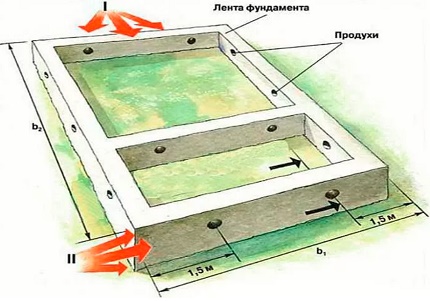
If there are partitions inside the foundation, each of them also makes vent holes. In order for the movement of air masses to be stable and free, the internal vents are located directly opposite the products selected in the external walls.
If it is impossible to select the required number of holes in the walls of the base or foundation, increase the area of each mini-opening. It is important that the total ventilation area meets regulatory requirements.
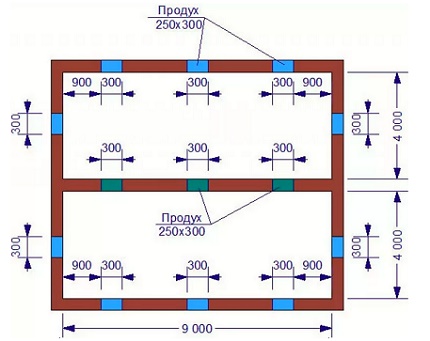
You can make a series of holes of the same size, or you can have one wide window with a grille or an opening sash. When arranging a window, there must be a passage or hatch inside the structure that can be opened for periodic salvo ventilation.
Cut through ventilation openings in the foundation / basement of an already erected building, you can use a mobile drilling rig designed for horizontal drilling and drilling of walls. To form the hole you will need a shell equipped with a diamond crown.
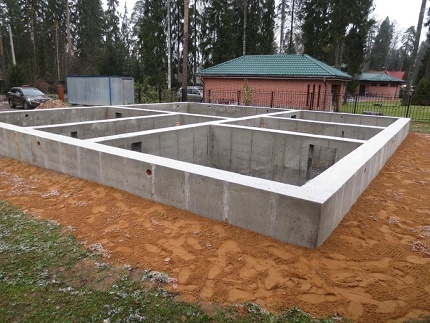
If inside there is an additional foundation, for example, under brick oven or a massive floor gas boiler, then inside the outer base the number of holes must be increased by 1.5-2 times.
Products can be not only round, but also square, rectangular and even triangular. The main thing is not to reduce the total cross section specified in the building codes. The size of the hole should not impede the flow of the required amount of air.

The second way to organize a ventilated space is more time-consuming and more resource intensive. An extract is arranged from the underground through the ventilation pipe to the roof. In this case, air enters the system through the grilles in the rooms.
In this case, they do not make air vents in the foundation, however, external insulation of the foundation, base and blind areas. This is the best option if you plan to build a well-insulated eco a house in the construction of which the principles of energy conservation were used.
Underground ventilation in a wooden house
Felling a wooden house is most often erected on a columnar base. A lower crown is mounted on it, which served as a kind of grillage for laying floor beams. The gaps between the foundation pillars most often do not lay at all with anything, which provides natural ventilation.
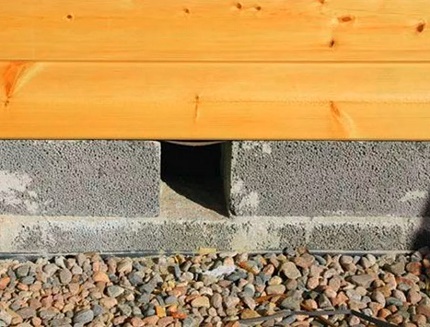
If the floor in the house is decided not to be finished with a wooden flooring, then it is arranged using floating technology, i.e. the sub floor has no connection with the walls. In this case, a small gap remains between the cover and the crown, through which the underground and floor will be aired.
The gaps are covered with skirting boards, however, the presence of small slots allows for full ventilation. On the opposite sides in the rooms you can place special skirting boards with ventilation holes.
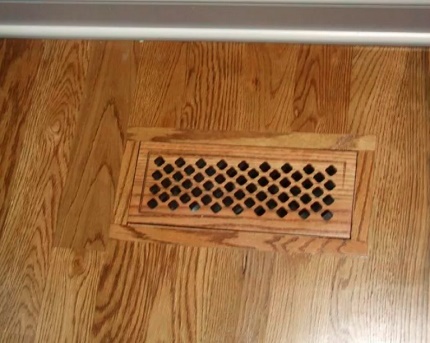
In addition, in the corners near the walls, you can leave slots in the floor for ventilation, covering them with ventilation grilles. Such a solution will also contribute to improving air circulation under the floor of the building.
Air exchange rates
How to organize underground ventilation? It is necessary to lay holes for ventilation at the basement construction stage.
To ensure stable air exchange in the space under the lower floor, the following rules should be observed:
- When arranging perfumes 15-20 cm below the upper edge of the tape (if the base is low), a pit is made in front of the hole.
- The step between adjacent openings should not exceed 3m.
- The holes in the base / foundation are located at a distance from the corner to 1m.
If the house is built on a hill, for sure, it is well blown from any direction. In this case, the number of vents can be slightly reduced.
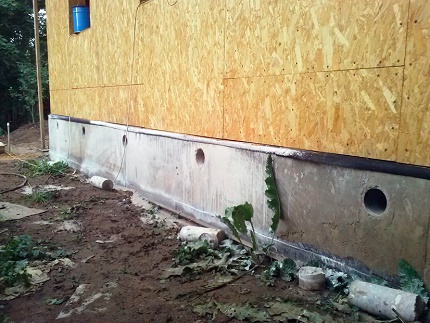
In the basement or foundation of a house built in a lowland, the total cross section of the ventilation openings should be increased: either by number or by area.
Dimensions holes for foundation ventilation and underground are regulated SNiPom under number 41-01-2003 or an updated version of the rules of the joint venture 60.13330.2012.
The area of all vents must be at least 1/400 of the entire area of the subfloor. That is, if the house is 9 m by 9 m in size, then the subfloor area is 81 m2. In this case, in the foundation, the total area of vents should be 81/400 = 0.20 m2 or 20 cm2.
The minimum air area must not be less than 0.05 m2. That is, rectangular holes should have a size of 25 × 20cm or 50 × 10cm, and round ones should have a diameter of 25cm.
If in a private house such products look too large, they can be made 2 times smaller by increasing the number vent holesso that their total area is not less than calculated.
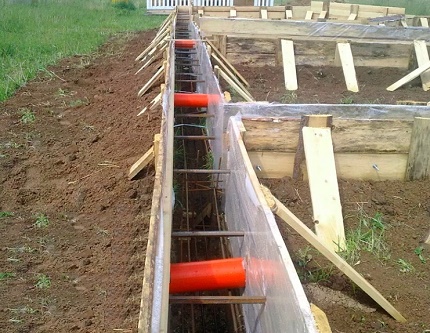
When arranging vents in the strip foundation, the mortgages are fixed after the installation of the reinforcing frame. It can be plastic or metal pipes or pipes made of asbestos cement. Their edges are brought out on the same level with the formwork and are well fixed.
So that concrete does not flatten plastic during pouring, sand is poured into the pipes and closed with plugs. After formwork such mortgages remain in place. Rectangular vents are made using boxes of downed boards. A wooden box is also installed in a reinforcing frame, after the concrete has hardened, it is removed.
Easier to do vent holes in the brick base. In this case, you can trim the bricks or put a half in place of the whole brick. In the socles erected from concrete blocks, you can take several blocks with a pair of large holes, make them through and put in place of normal ones. If the building material is reinforced concrete blocks, the vents are made at the joints.
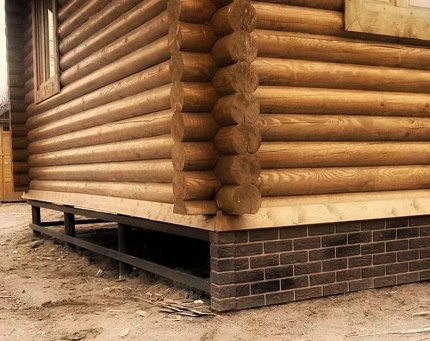
If in the columnar foundation the gap between the supports is closed with brick or concrete blocks, the required number of holes is left in the building material. It is necessary that their area be equal to one four hundred square footage.
How to improve air exchange in an already built house?
If the house is already standing, and the available products are not enough, the underground is constantly feeling high humidity and a fungus has begun to form, measures can be taken.
To enhance air flow and improve ventilation, you must:
- Drill new products or increase the size of old ones. The easiest way is to drill a lot of holes around the perimeter of the perforator with a thick drill. Then drill the remaining gaps and level the walls. However, a more productive method is drilling with a diamond crown without impact loads, after which smooth and neat holes remain;
- Improve ventilation draft by removing several pipes from the exhaust openings to the roof. The thrust will increase due to the greater pressure drop;
- Put automatic forced ventilation with a timer;
- To build in the base of the stove a channel combined with a blower. Then the air will be drawn from below, providing the stove with the oxygen it needs to burn. However, this option is applicable only for buildings with brick stoves, and then only at the stage of construction or alteration of the unit.
- Reduce the penetration of groundwater through a powerful waterproofing device. The method does not allow to abandon ventilation, but reduces the level of humidity characteristic of structures buried in the ground.
Waterproofing materials, thick building polyethylene or polymer membrane, must be laid with overwhelming 10-15 cm, leading to the walls at 20-30 cm and securing the bar. To prevent damage to the film, a skinny screed of 3 cm is poured onto it.
With a warmed foundation, base, blind area the effect in combination with the ventilation pipe will be repeated. Without insulation, condensation will collect on the film, which, having made a slope, can be diverted away from the underfloor.
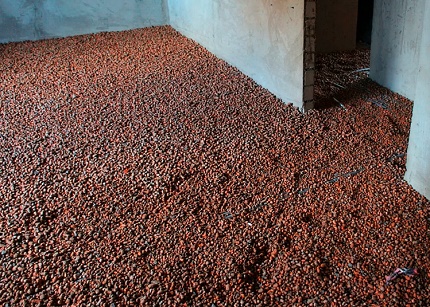
But expanded clay, due to its voidness, will itself draw water from the surrounding soil. Therefore, this material can be filled up only if the level of hot water does not rise above the level of 2.0 m from the day surface. If not, you will have to arrange ventilation of the subfloor in the house according to the scheme described above, adhering to standard principles.
Forced ventilation device
Natural circulation of air currents may not always provide the necessary drying of the underground space. Then they install a mechanical ventilation unit or forced-air ventilation valves.
Mechanical compulsion of air to movement is required:
- If the house is built in the glen between the hills.
- If the natural movement of air masses is impossible due to the climatic features of the area (high humidity, for example).
- If the base of the building is buried in soils with low filtration properties, due to which atmospheric water weakly seeps into the underlying rocks. You can determine by stagnant puddles after rains, poorly discharged flood waters. In this case, in addition to ventilation, an effective wall drainage is needed, which can be built after the construction of the house.
Compulsory ventilation systems are characterized by the presence of installed supply / exhaust fans in the air openings, contributing to a more intensive circulation of air masses. The most common and economical option is to install one exhaust fan.
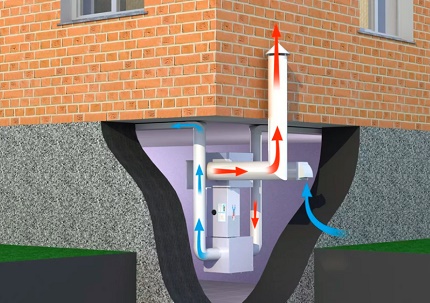
Such fans are enough to turn on for half an hour once a day. You can set the system to automatically turn on / off the ventilation devices. With periodically increased humidity - for example, during spring snowmelt, heating equipment can be used to quickly drain the underfloor.
Features of the combined system
Combined basement ventilation system set if ventilation system the natural type does not cope with its tasks, and using only the mechanical is too expensive. A huge plus of the combined system - it is not affected by natural factors and temperature differences and it can function year-round.
Combined ventilation, as well as natural, is equipped with supply / exhaust openings. A fan is installed in the exhaust opening, which quickly removes stagnant air from the underground. If the subfloor area is large, the fan is also installed in the supply air duct.
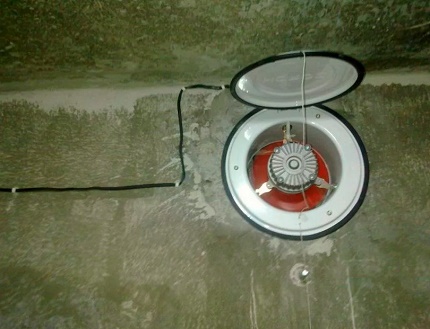
In small subfloors this is not economically feasible, since there will be an overspending of electricity. A fan will help to quickly drain the space if natural ventilation can not cope with this problem.
Most often, to equip a combined system, fans with a capacity of up to 100W are taken. You can choose both centrifugal and axial devices. Axial are more economical, in addition, they provide a fairly powerful air flow, while spending a moderate amount of electricity. When installing axial devices, a check valve must be installed in the pipe.
Seasonal Ventilation System Care
The main debate when caring for the ventilation system raises the question - to close the air for the winter or not.
There are 2 points of view here:
- With open vents. Through them, moisture falling out in the form of condensate in heated overly insulated rooms will be removed. Directly communicating with the ground, the floor in them will always be cold, which means that during the heating season the formation of “dew” will intensify. However, if you invest in floor insulation, this can be avoided.
- Closed for the winter air. Warm, moist air in the living room will fall on the cold surfaces of the subfloor (basement walls). Condensation will drain into the ground. In the spring / summer, it will evaporate, increasing humidity, so drying the underfloor with heating appliances will be required.
You will have to close the ventilation if the house is wooden, and flooring done by floating technology, i.e. there are gaps near the walls, and even ventilation holes with grilles are selected in the floor. Otherwise the floor will be strong cool.
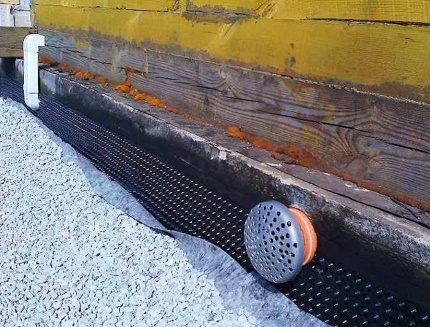
In other cases, you can consider both options. In addition, in winter it is necessary to regularly clear the base of snow so that the ventilation openings do not completely fill up. After all, even when closed, they will contribute to ventilation, even if in a reduced state.
In other seasons, care for ventilation system simple:
- in spring - open vents and dry the underfloor;
- in the summer - make sure that vent holes It didn’t fill up with garbage and they were not blocked by the grown plants;
For all types of vents, it is necessary to install ventilation grilles (preferably metal ones) so that rodents and raccoons do not get inside, and regularly clean them of debris so that the air flow does not decrease.
Additional moisture reduction
So that the ventilation system does not have to be strengthened by increasing the total cross-section or installing fans, the following work must be done:
- Device efficient drainage system - water discharge from the foundation.
- Waterproofing the base of the house and basement. There are many types of waterproofing: it can be rolled, surfaced, coated, etc.
- Performing insulation. The best material in terms of economy and efficiency - Eps. this one good heat insulatorthat does not leak water. He is not interested in rodents and does not rot. Eps can be insulated and blind area.
The listed events do not cancel, but only supplement the ventilation. Only in the complex can the ideal drainage of the space in the basement compartments be achieved.
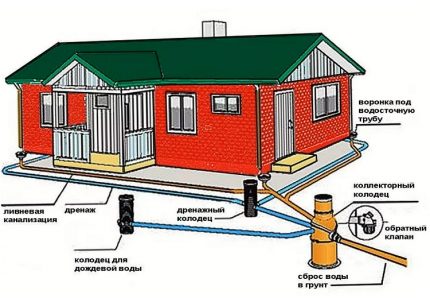
When the system is installed according to the compulsory scheme of installation, maintenance and maintenance costs, it will be more than with a natural type organization. It should be borne in mind that in winter condensation can form on the walls of the ventilation pipes themselves, and in frosts the cross-section can completely clog chicken.
To avoid this, you can pipe heat insulate penofol. At the bottom bend you can think of condensate collector - for example, drill a hole or put a tee instead of a corner.
Which ventilation scheme to choose?
So, we figured out whether a ventilation system is needed under the floor, and now it remains to decide which scheme to choose for specific conditions. There are several important points to consider when choosing a system. The operation of ventilation largely depends on the type of climate in a particular area, average street temperature, etc.

Natural ventilation is more effective in winter, since it is at this time that a large difference between the temperature inside the underground and outside is recorded, which ensures good circulation of air masses.
However, with an even greater decrease in temperature, there is the possibility of an excessive increase in air exchange, which is also not particularly good, since it can lead to freezing of structures. Therefore, with a significant decrease in the temperature of the product, it is necessary to close it.
In summer, the temperature difference inside the underfloor and outside is minimized, so air circulation may cease. Therefore, natural ventilation even with supply and exhaust system - Not the best option for hot regions. Here you should install the combined ventilation system with pipes.
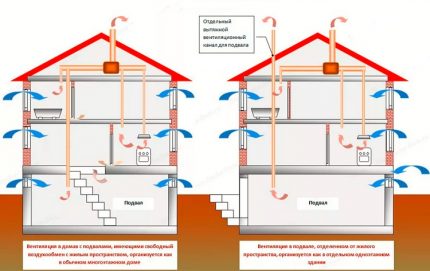
For arrangement of combined ventilation systems for a small subfloor, it will be enough to install one pipe. So that it can provide both a conclusion and reception of air masses, it is necessary to divide it vertically into 2 channels.
Such ventilation pipes are sold in hardware stores. Each channel has its own valve to adjust the flow rate. The functioning of such ventilation is checked quite simply: you need to attach a sheet of paper to the outlet in turn.
System device materials
For the arrangement of air ducts of supply and exhaust ventilation, 3 types of pipes are used:
- Asbestos cement - durable, resistant to corrosion and well withstand frost. They have a sufficient length, so during installation you can do without connections;
- Galvanized steel - corrosion resistant, easy to install, light weight. However, the price of metal components ventilation systems usually higher than plastic and asbestos-cement;
- Plastic distinguished by a smooth inner surface, providing easy and quick air flow. Plastic pipes they do not rust, they do not need to be cleaned, and their service life exceeds a couple of tens of years. One of their drawbacks is flammability.
Determining factor of effectiveness ventilation systems is the proportionality of the cross section of the installed air duct of the area of the room in which it is mounted. Heat engineers recommend that when calculating, adhere to the following norm: 1 m2 subfloor required 26 cm2 sections.
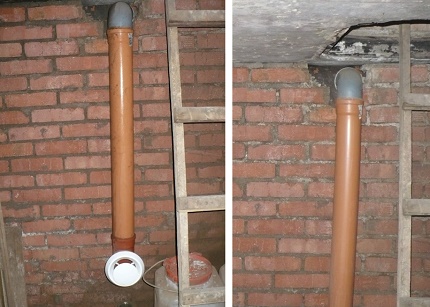
There is the following formula for calculating the required pipe diameter:
(S cellar × 26) ÷ 13.
That is, if the subfloor area is 9 m2, you will need a pipe with a diameter of 18 cm: (9 × 26) = 208 ÷ 13 = 18 cm. For single-pipe ventilation, the diameter should be even larger, for example, 20 cm.
How to install an air duct?
Most often for the organization of supply and exhaust ventilation systems 2 ducts are used. To circulation of air masses was more uniform, take pipes of the same diameter. To accelerate the air outlet, you can put a chimney slightly larger cross-section.
Mount the air ducts at the greatest possible distance from each other on opposite walls. Along the route of the pipes, it is necessary to minimize the number of bends.
The exhaust pipe is mounted in one of the corners and its lower end should be near the ceiling itself, so that all the warm air going up through it is discharged. Duct can be combined with a kitchen exhaust ventilation system and bring to the roof one and a half meters above the ridge.
The street duct should be insulated, we wrote about this above. The most aesthetic option is to put another pipe on the pipe, but of a larger size and lay any insulation in the formed space. It is better to install a special ventilation deflector on the pipe head, which helps to increase traction.
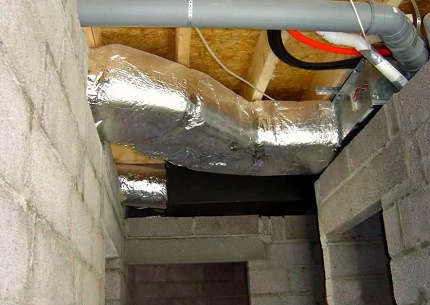
The supply air duct is mounted in the opposite corner of the subfloor, and its open end should be as close to the ground as possible. The inlet must be lower than the exhaust. Similarly, the pipe can be run through the house.
If a supply air duct is discharged through the roof, its intake opening should be below the exhaust pipe. Outer edge possessive pipes are raised on the roof to 20-25cm.
Also, the supply pipe can be brought out near the wall of the house outside. In this case, the hole should be raised above the ground by 80cm ideally. Inside, air vents are installed in each duct to regulate the intensity of air movement.
With the rules of the ventilation system in the attic of a private house will introduce next article, detailing the principles of the device and the nuances of the structure.
Conclusions and useful video on the topic
The following video will introduce the rules and principles of the ventilation device in the subfield:
Guide for the arrangement of vents in the foundation:
How to deal with dampness in a village house:
Subfloor - Closed unventilated a space in which all favorable conditions are created for the development of mold, dampness, fungus, condensation. Creating effective methods will help get rid of destructive processes. ventilation systems. This problem can be solved both at the stage of building a house, and later - at the stage of operation of the building.
Want to talk about how the ventilation system in your underground works? Maybe you have methods to increase its effectiveness, which are worth sharing with site visitors? Write comments, please, in the block below, ask questions, post a photo on the topic of the article.

 Basement ventilation in a private house: the best ways to arrange proper air exchange
Basement ventilation in a private house: the best ways to arrange proper air exchange 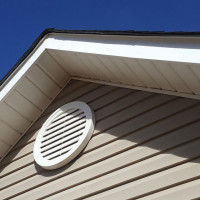 Ventilation in a private house through the pediment: arrangement options
Ventilation in a private house through the pediment: arrangement options 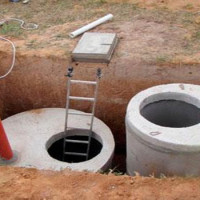 Ventilation of a septic tank in a private house: is it needed + tips for arranging
Ventilation of a septic tank in a private house: is it needed + tips for arranging 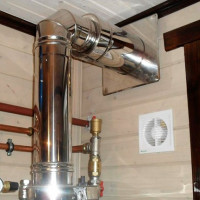 Ventilation for a gas boiler in a private house: arrangement rules
Ventilation for a gas boiler in a private house: arrangement rules  Condensation in ventilation in a private house: causes of moisture accumulation and ways to fix the problem
Condensation in ventilation in a private house: causes of moisture accumulation and ways to fix the problem 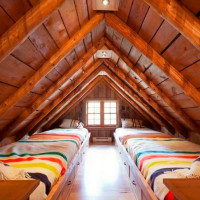 Attic ventilation in a private house: rules and devices for organizing air exchange
Attic ventilation in a private house: rules and devices for organizing air exchange  How much does it cost to connect gas to a private house: the price of organizing gas supply
How much does it cost to connect gas to a private house: the price of organizing gas supply  The best washing machines with dryer: model rating and customer tips
The best washing machines with dryer: model rating and customer tips  What is the color temperature of light and the nuances of choosing the temperature of the lamps to suit your needs
What is the color temperature of light and the nuances of choosing the temperature of the lamps to suit your needs  Replacement of a geyser in an apartment: replacement paperwork + basic norms and requirements
Replacement of a geyser in an apartment: replacement paperwork + basic norms and requirements